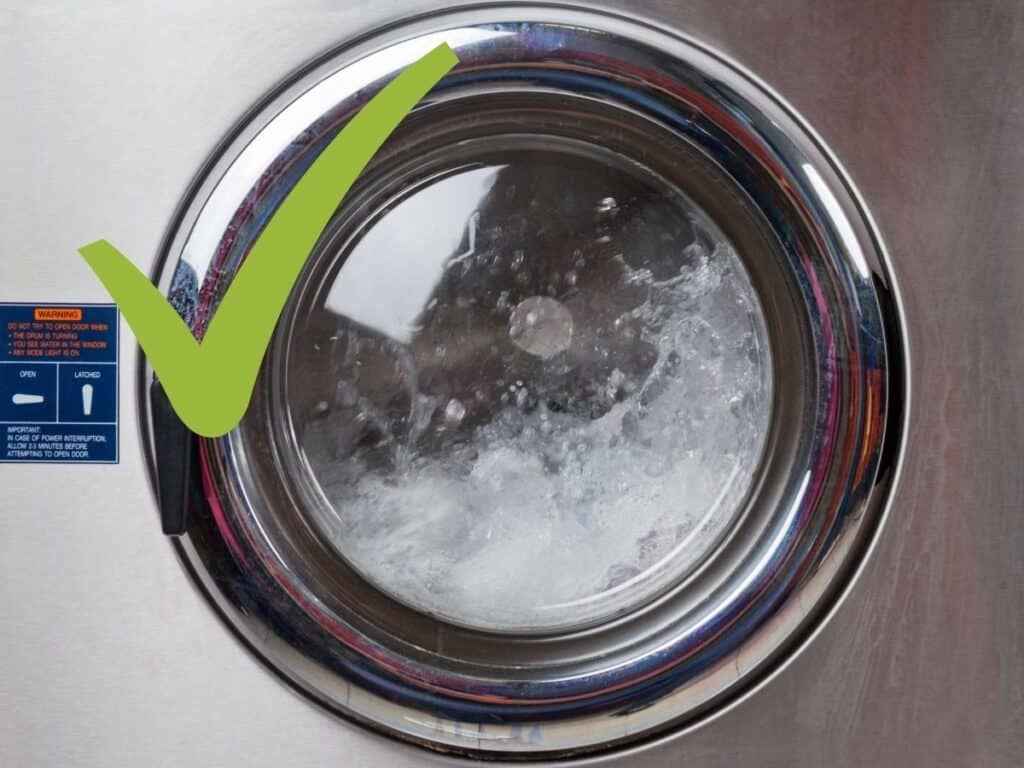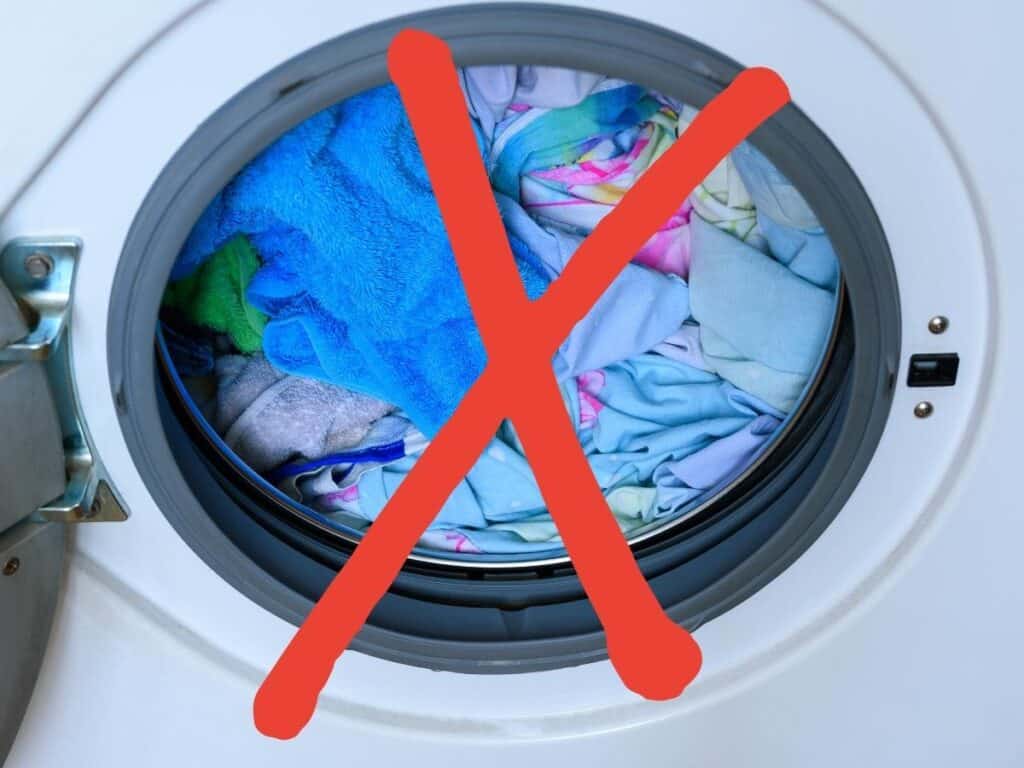We all love our washing machines for their unique and versatile washing programs which cater to our laundry needs. Rinse hold is a wash setting you will find in most control screens of most modern washing machines.
The program has several beneficial features which can improve your laundry quality. So, if you’ve been scratching your head over what it is for, sit back, and read on.
This article will teach you what it is when to use it, its benefit for your laundry, and much more.
What Is Rinse Hold Setting?
Rinse hold is designed to pause the program and hold the clothes before draining the final rinse water.
This stops the clothes from wrinkling if left in a dry washer drum.
Usually, an indicator will be on when the setting is in progress.
Once the draining has been completed, you can press the rinse hold button, and it will go off. That signals the starting of the final spinning cycle.
When to Use It
To Observe the Clarity of the Rinse Water

Sometimes even with your best effort, the clothes may not be rinsed adequately by the end of the process.
But using machines with this program helps a lot since you can observe the color of the rinse water while the program is paused.
That way, you can know whether the clothes have been sufficiently rinsed or if you should load another rinse cycle.
Reduce Creases

As we observed above, this is one of the main benefits of this feature. When the program is paused, the clothes are suspended.
And since they are kept in the final rinse of warm water, they do not get creased as they would with standard programs.
Use It for Starching Clothes
For those who love starched clothes, this could be one of your favorite washing programs. If you have used washers with “starch stop,” this one functions pretty much the same.
Once the program is paused, you can add starch directly to the clothes in the drum. Alternatively, you can use the fabric softener dispenser for the same results.
Time-Saving
As the wash setting pauses the cycle, it means you do not have to be there to unload the clothes to avoid them getting creased.
This is a great time-saving feature since it’s a set-and-go feature, which allows you to do other things in the meantime.
Just make sure you don’t leave the home or go to sleep while the washer is still running as that can be dangerous.
Saves Energy
Since this program reduces the clothes from getting creased, it is one of the cost-effective washing programs for those keen on cutting down on their power consumption bills.
Less wrinkled clothes mean a shorter time spent on ironing which lowers power consumption and ultimately your utility bills.
Additionally, reducing energy consumption contributes to a better environment which is also a very desirable attribute.
When Not to Use Rinse Hold

As the setting allows you to keep the clothes soaked in the washer until you are ready to spin, this may not be suitable for some clothes.
Some fabrics get ruined if soaked for a longer period than a few minutes to an hour. For example, some fade, bleed color or shrink. Others lose their structural strength and disintegrate.
How Long Should the Rinse Hold Setting Last?
Rinse hold is quite a helpful washing program, which can help you to achieve what you want in your laundry.
However, be sure not to keep them longer than is necessary as it poses some problems, as we’ve seen above.
Ideally, you can use the setting to hold the clothes for approximately 15 minutes to 1 hour. In any case, keeping longer also the setting becomes less cost-effective, as it uses more power than envisaged.
You’re usually better off leaving the clothes in the washer while it’s off if you don’t have time to take them out within an hour.
Rinse Hold vs. No Spin
While the two terms of a washing machine might appear similar, they are not. As we found out, the rinse hold is a program setting.
In contrast, the no spin is not a program per se, but a case where the machine fails to spin. This is a washer malfunction, and it should not be confused with rinse hold.
You see, washing machines are designed to spin only after draining the water. Sometimes this doesn’t happen, and the spinning function stalls. No spin can result from several causes, which include the following.
Overfilling the Washing Machine

Some washers may have indicators to signal overload, though not always. If that happens, the washer may stop spinning. In the event of that, you’ve no choice but to stop the washing machine and unload some of the clothes.
Even if you were able to run the washer overfilled, it would cause damage to your washer, and your clothes would not be cleaned properly.
Imbalanced Wash Load
If the wash load is not properly distributed, it can result in the washer not spinning. Most washers are designed with sensors to detect load weight imbalances and stop spinning.
This often happens when spinning only a few large items that may collect on one side of the washer. To resolve this, you need to open the drum and manually distribute the load, and spinning will resume.
Imbalance Washer

This is another reason why a washer may hold spinning. It is pretty common with front-loading washers compared to top-loading ones.
If the washer is tilted on one side, the sensors will transmit this signal, and it will stop spinning even if the imbalance happens mid-cycle. The only solution to this is to put it in a place where it is on level ground.
I also wrote a guide on stacking washers and dryers here which may help with this problem.
Final Thoughts
Rinse hold is an excellent wash setting that you can use to benefit your laundry. As we’ve noted above, it reduces creases on clothes, and it has power and energy-saving benefits as well.
It is one of the not-so-often used wash programs – you could easily start using it and gain lots of benefits from it.
But like all other programs, it has its downsides. So you’ve to take some precautions when using the program.
As we found out, this is not a program for every type of fabric, as some can get ruined when held in the water for a long time.
Remember to always look at the care label to understand the compatibility of the fabric to the wash program.
I’ve created a comprehensive guide on how to use all the settings on your washing machine that may interest you to read next.

I’m an expert wardrobe organizer and a bit of a clean freak. I created this website and its YouTube channel to share practical guides about laundry and organizing. My teachings have been featured in multiple large news publications, and I’ve self-published two wardrobe organizing books and an entire course on the subject.

